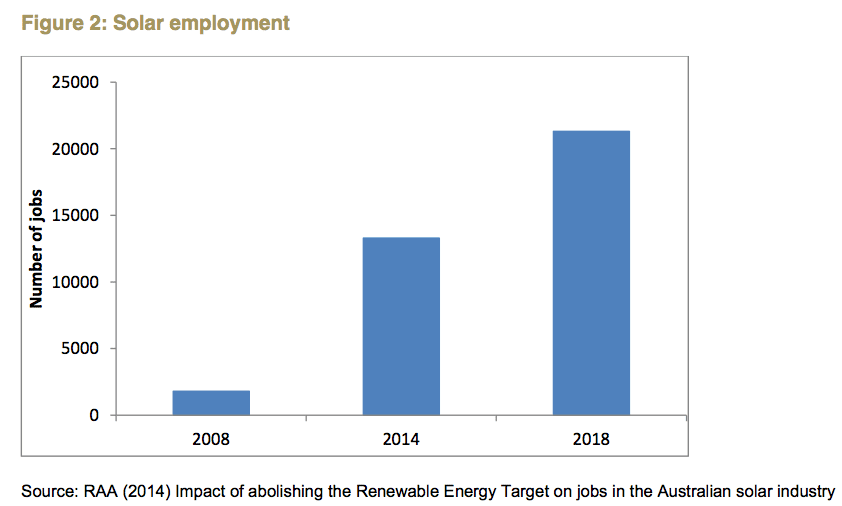Despite Australia’s history as a coal-fired economy, the nation’s solar industry employs a “far larger” amount of people than its fossil-fuelled power stations, a new report has found.
The report, released on Monday by The Australia Institute says that in 2014, 4,300 solar PV businesses employed 13,300 people in Australia – a vast increase on 2008 numbers, when the industry only employed 1,800 people.
This was a “far larger” amount that the total employed in Australia’s coal-fired power stations, said the report, and a good deal larger that the total number of people working in the entire electricity generation sector, which amounted to 9,487 in 2007 according to the ABS, a figure which also included those employed in gas, hydro and renewable energy generation.
“Since 2007.” says the report, “no new coal-fired power stations have been built, but a number have been mothballed, including Tarong in Queensland and Munmorah in NSW.”
And Australia’s biggest existing coal-fired power generators, such as Macquarie Generation and Stanwell, employed only 642 and 800 FTE workers respectively, said the TAI.
Australia’s solar PV industry, meanwhile, had seen rapid expansion in recent years, as the report illustrates in the graph reproduced below. And it is estimated that an additional 8,000 jobs will be created in the four years from 2014 to 2018.
 “The solar industry is likely to become an even bigger employer in the near future as the price of both solar panels and battery storage come down,” says the report.
“The solar industry is likely to become an even bigger employer in the near future as the price of both solar panels and battery storage come down,” says the report.
“Australian governments have a unique opportunity to help the solar industry by lowering the regulatory burdens faced by the industry and shaping our electricity grid to allow solar to compete on a more level playing field. As discussed above, the sooner such an accommodation is made the smoother the transition will be and, in turn, the lower the cost to industry and households.
As a side note, the report also notes that a recent examination of the productivity of solar panel installation found that Australian workers were superior to their US counterparts.
Quoting analysis by America’s the Rocky Mountain Institute, TAI says Australian installers were averaging 6.1 labor-hours per kW solar installed, compared to installers in the US, who were more than 50 per cent less efficient at 9.4 labor- hours per kW installed.






